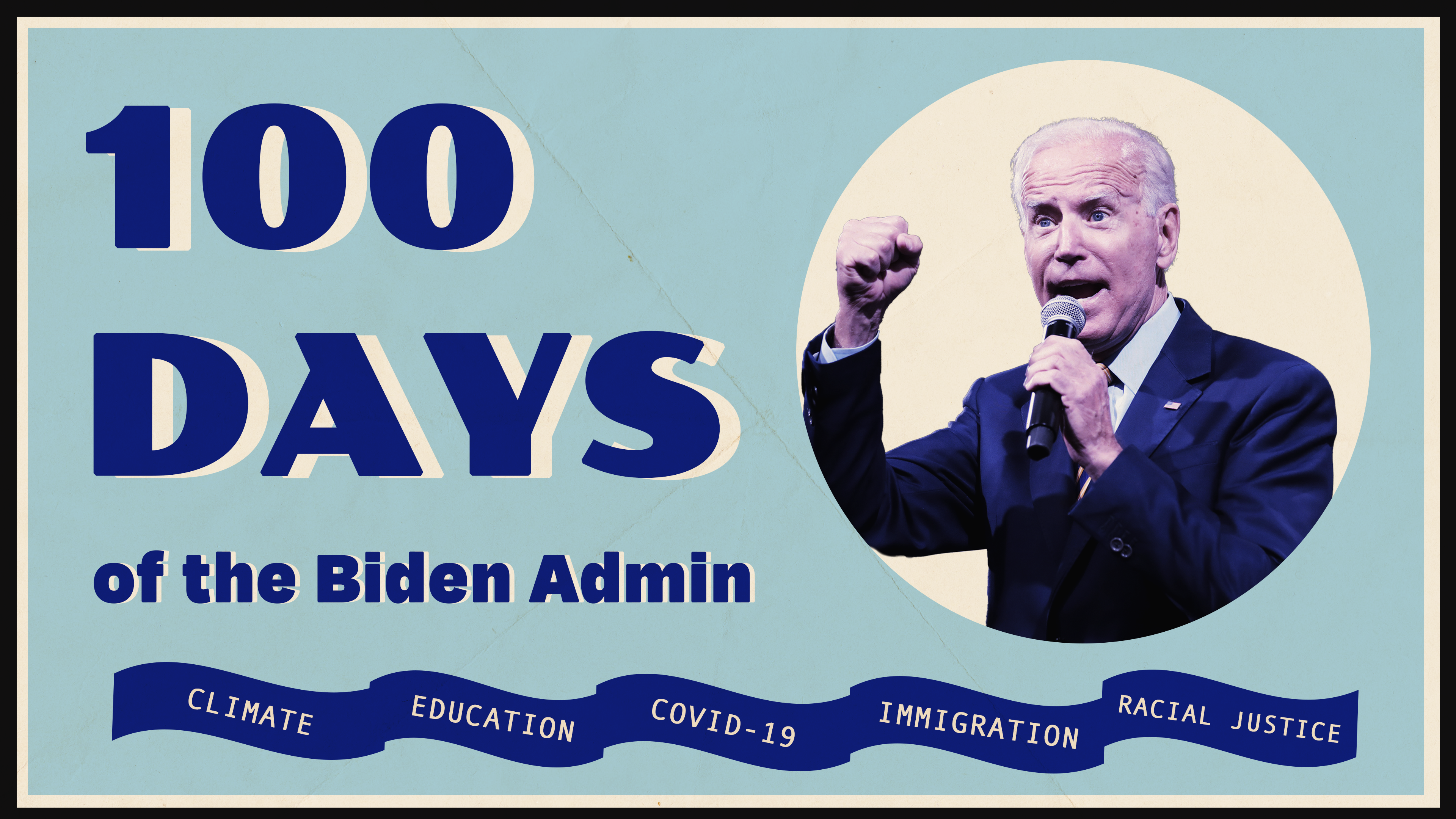
President Biden’s First 100 Days: An Editor’s Letter
The Interlude examines the progress and setbacks of President Joe Biden’s first 100 days in office.
A president’s first 100 days in office sets the tone for the rest of their term — but it wasn’t always this way. We really started caring about it when President Franklin D. Roosevelt took office in 1933 in the midst of the Great Depression. In Roosevelt’s first 100 days, he enacted bold, sweeping actions — from creating the Federal Emergency Relief Administration which supplied federal money to help the jobless, to introducing the Farm Credit Act that offered short-term loans and low interest rates to farmers. Roosevelt’s reforms ushered in a new era for a nation in crisis.
To say Joe Biden inherited a litany of crises on January 20 would be an understatement. The United States was — and still is — in the throes of a global pandemic that has claimed the lives of over 500,000 Americans. A pandemic-induced recession threatens a long-term unemployment crisis. And even in the face of a massive racial justice movement sparked by the police murder of George Floyd last summer, law enforcement continues to kill civilians on a daily basis.
Progressives didn’t have high hopes for Biden, a longtime moderate. But since his inauguration, activists and lawmakers alike have been surprised by Biden’s wins, such as the COVID-19 stimulus bill and a mass vaccination campaign. But progressives have also faced losses, losing the $15 minimum wage in the COVID-19 relief bill and providing $1,400 stimulus checks instead of the promised $2,000.
There are countless policy areas Biden could have laser-focused on during his first 100 days. Our writers took a close look at the 46th president’s early wins and losses, and what it means for the future of our nation. Check out the stories throughout the week to learn more about the issues you care about.
— Natasha Roy, politics editor


